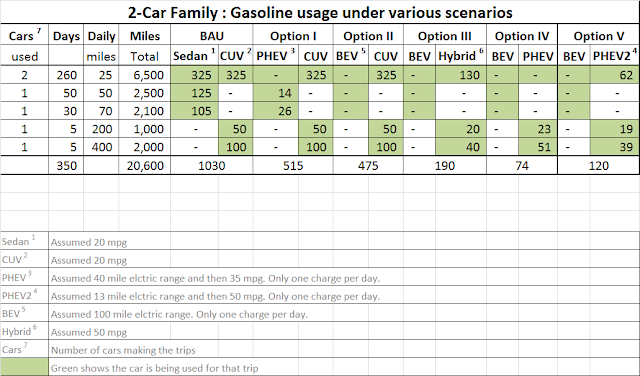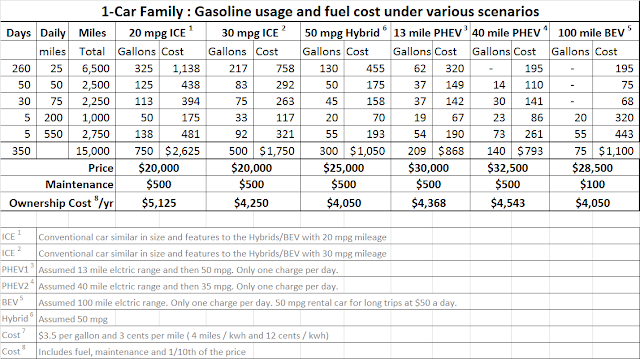DrInnovation
Well-known member
N952JL said:DrInnovation said:I see lots of people tossing out long trips as an issue, some dismissing it as infrequent. Individual's of course vary but long trips are a real issue for the average American.
What about the economics of an add on RE?
With a 25mpg ICE the 12 trips > 194 miles need about ~100 gallons of gas, which is < $400/year and it will be hard to justify an expensive range-extender. (Total long distance travel 7500 is about 300 gallons or < $1200 a year).
60% of families have second car, so the car is not and added cost, just gas. A rental ICE would obviously add more.
With respect to the total cost of covering one can argue if renting an ICE or a Range Extender makes more sense.
Renting a range extender might make sense if its efficient enough and the price < price of gas for the ICE. With a limited market for while that may be difficult to make cost effective.
If you are focused on minimizing cost this is totally moot as no new BEV or Range Extended EV (REEV) is the right choice. The right choice is used Prius or other high MPG car (because of the vehicle cost and rapid depreciation no new vehicle is a good financial investment), at least until used BEV or REEV are on the market and a decent price.
I feel you have made some very good points. In the end, I do not want us to import any oil as that is a complete drain on our economy. I only have one small point. You made an assumption that all families have two cars so the only added expense is the expense of the gas necessary to run the car vs the range extender. That may not be true. I am looking forward to the time I only need one vehicle. Without a Range Extender or longer range BEVs I will be forced to buy a Prius or simular vehicle which is more than just the cost of gas.
My lease for the Leaf will be 39 months. I am hoping that within 39 months we have improvements that will allow me to keep using a BEV. Till then, I fall within the 12 per year longer 200+ round trip trips. But the leaf does meet my everyday needs.
Actually, the 2-car case in general worse case as the cost of the ICE is already there. If you have to rent an ICE for trips, the cost equation tilts to the EREV even more. As you say you take average number of longer trips, if you only have 1 car, unless your daily commute is > 52miles you'll be more efficient with a Volt-like EREV, than a PiP, and either is better than BEV + average rental ICE for trips. If you can always rent a Prius (or some >40MPG ICE) for those longer trips, then you are doing better in total gas usage with your Leaf for everyday and high MPG rental.
Hopefully in 39months there will be a lot more choices on both the BEV and EREV side.



